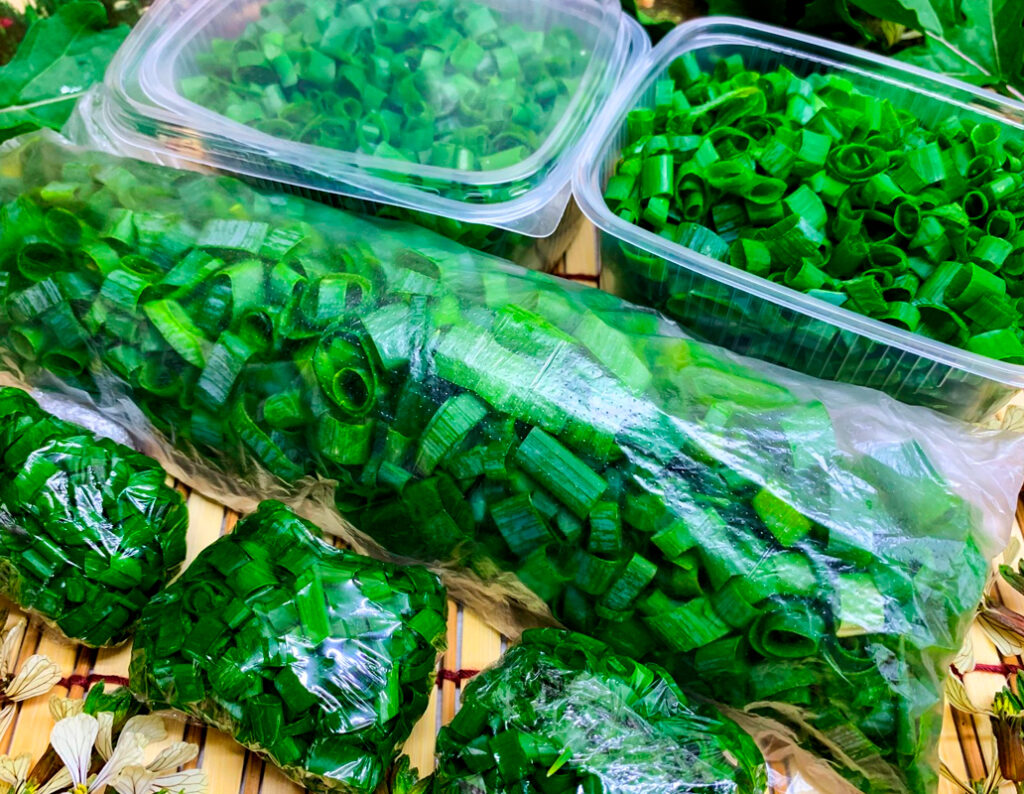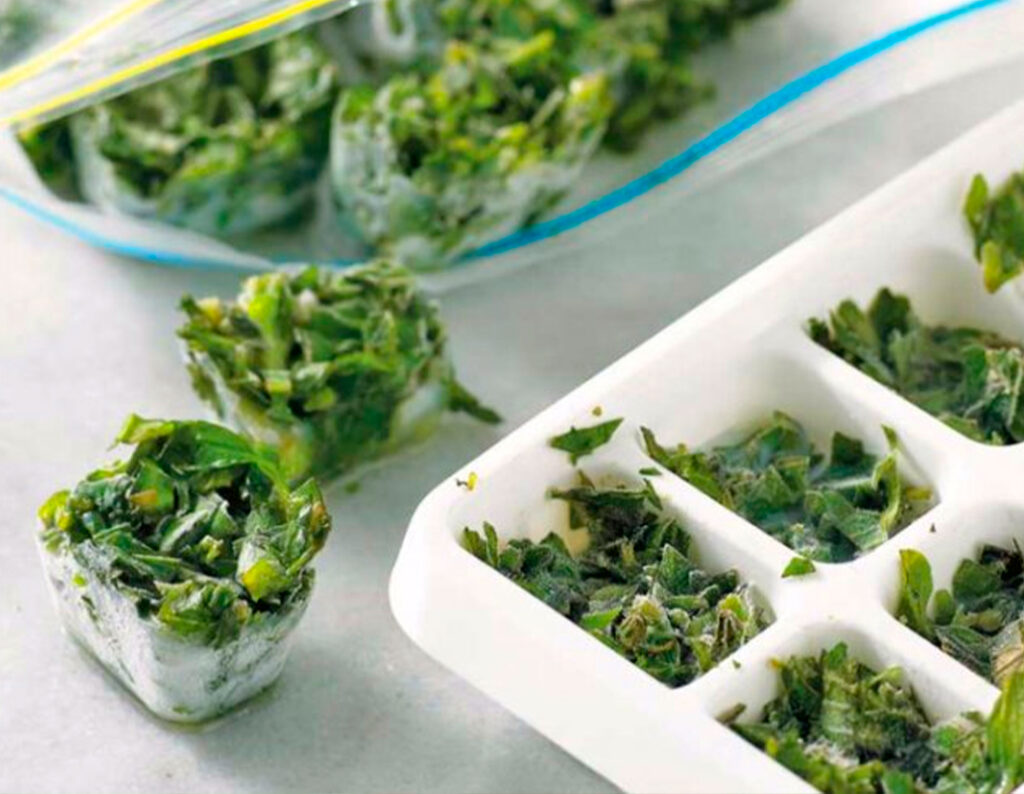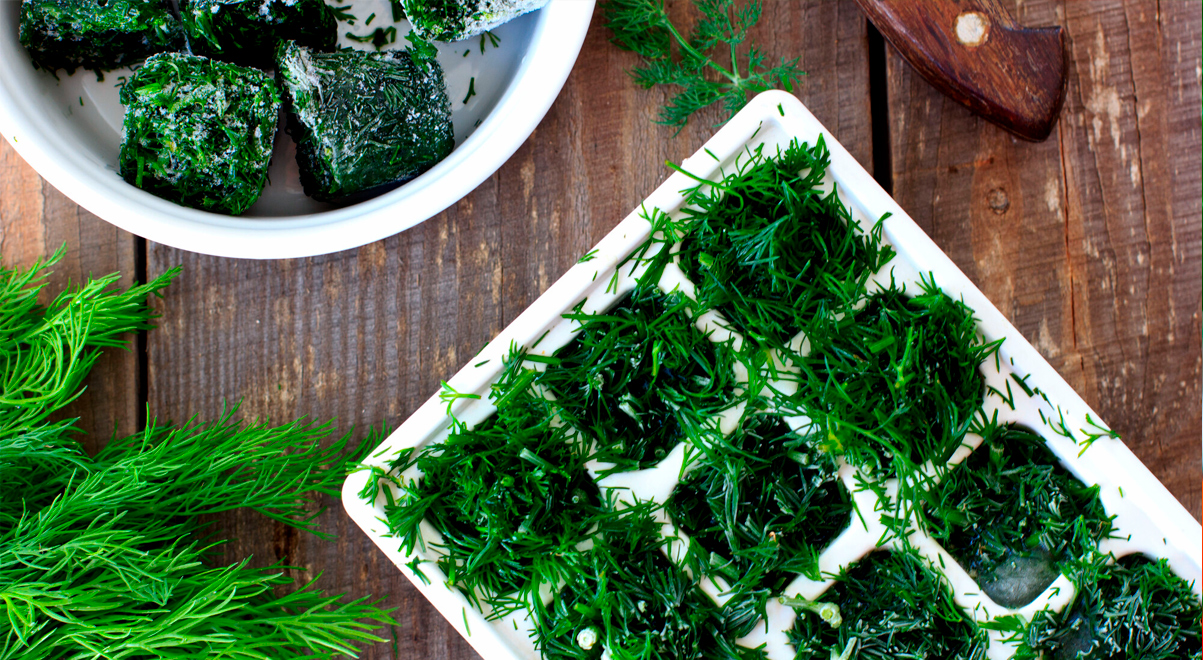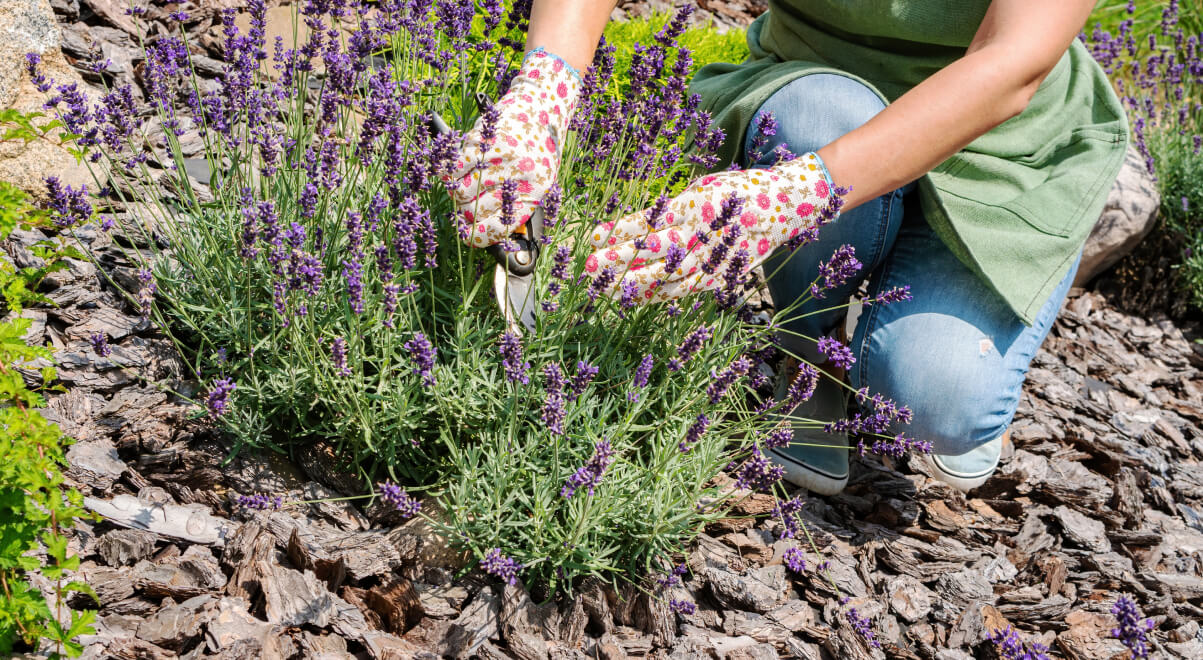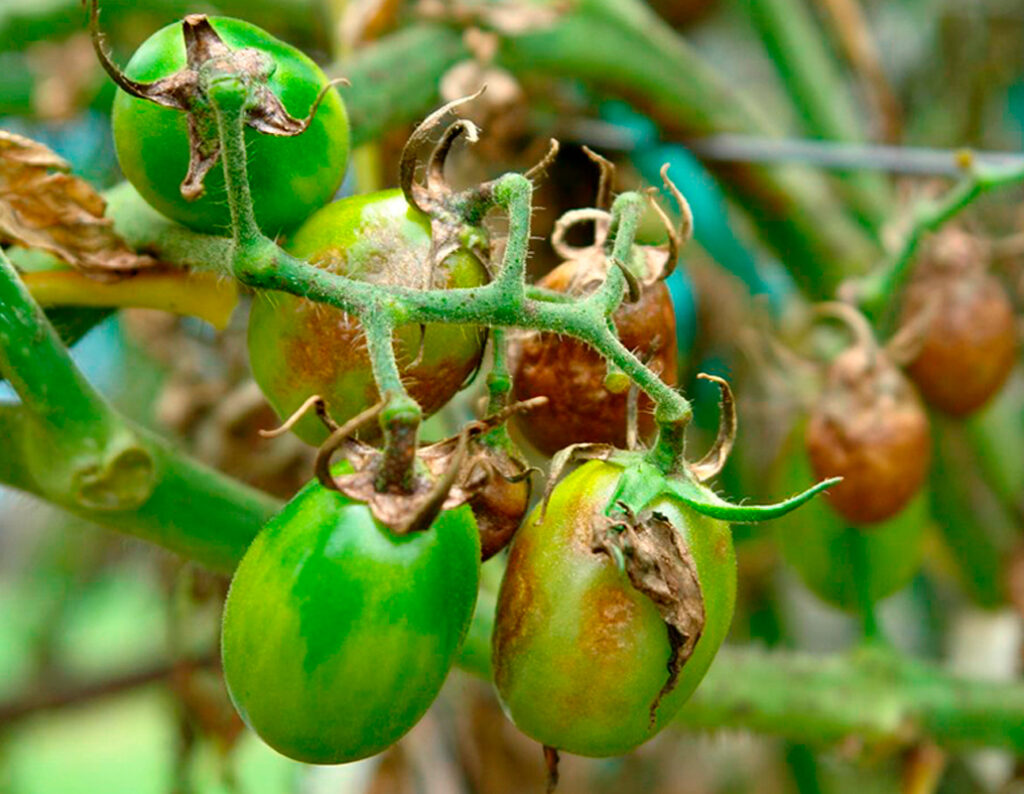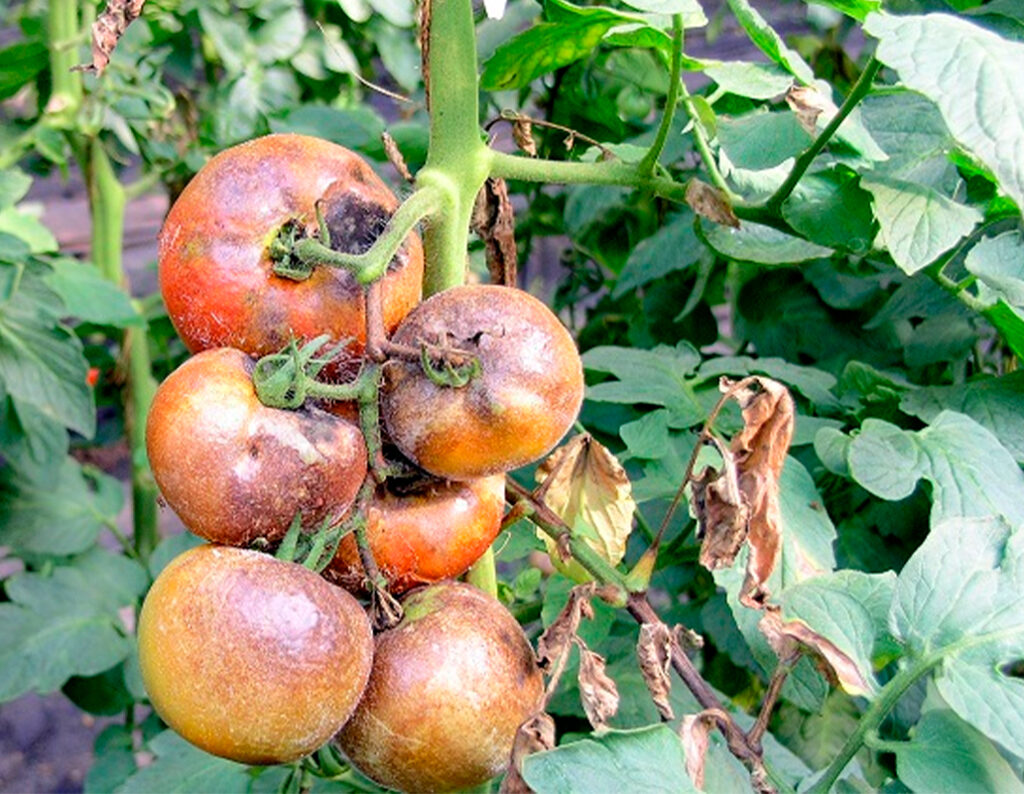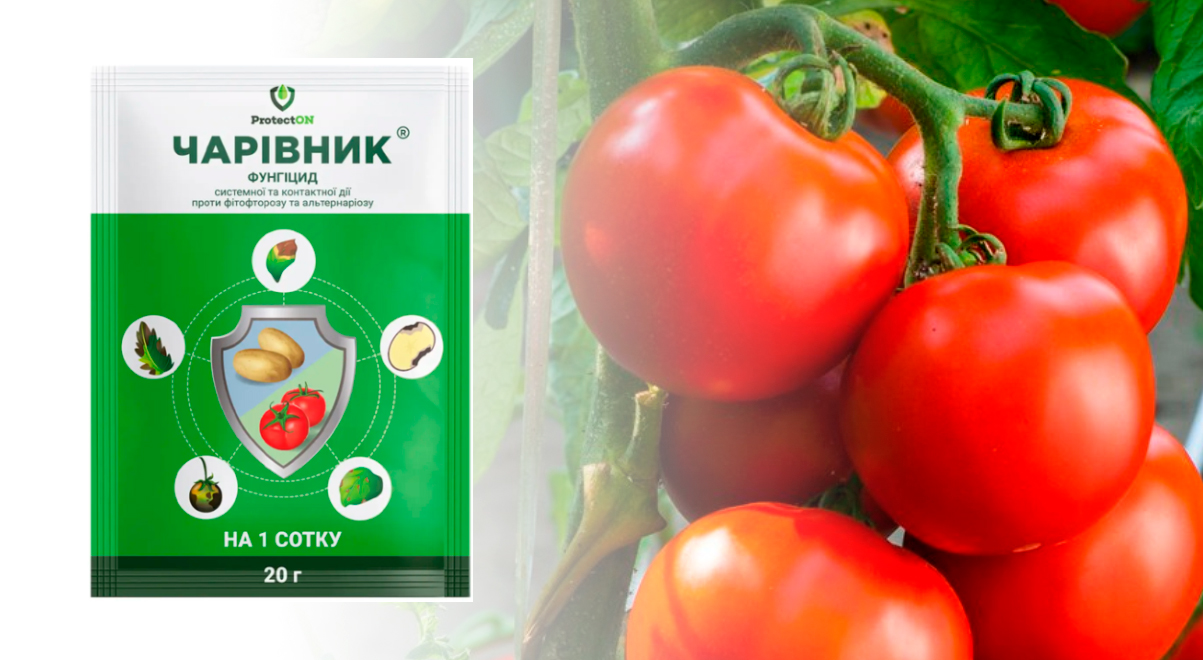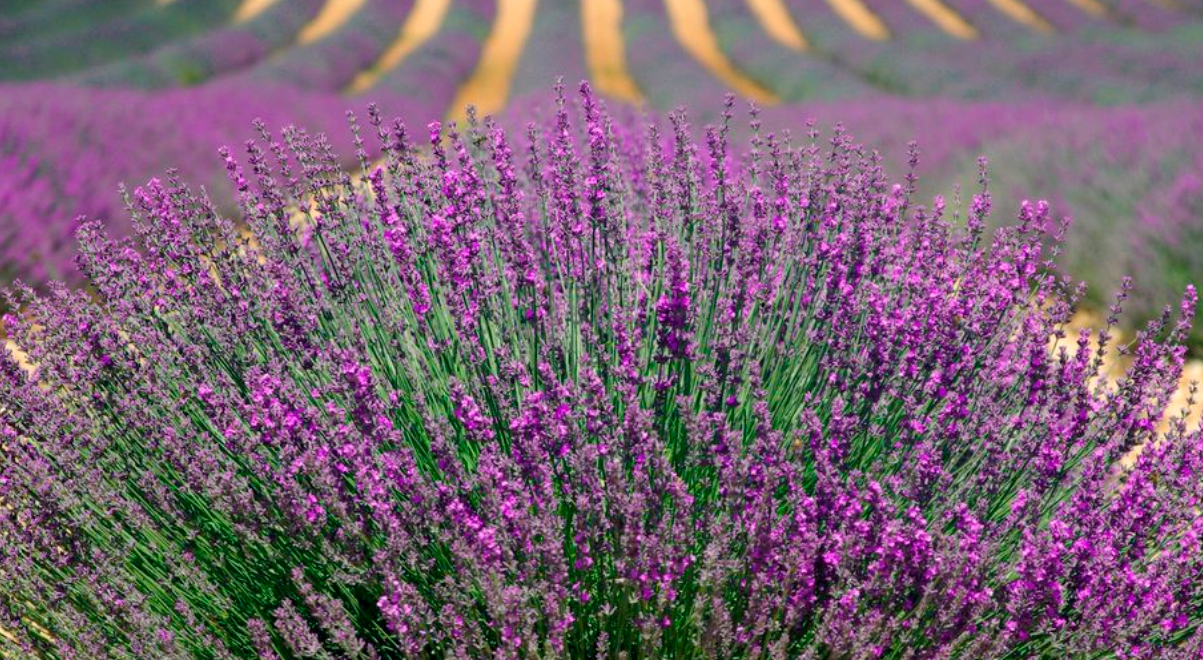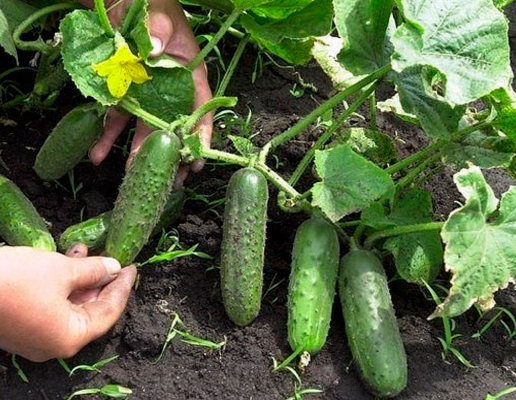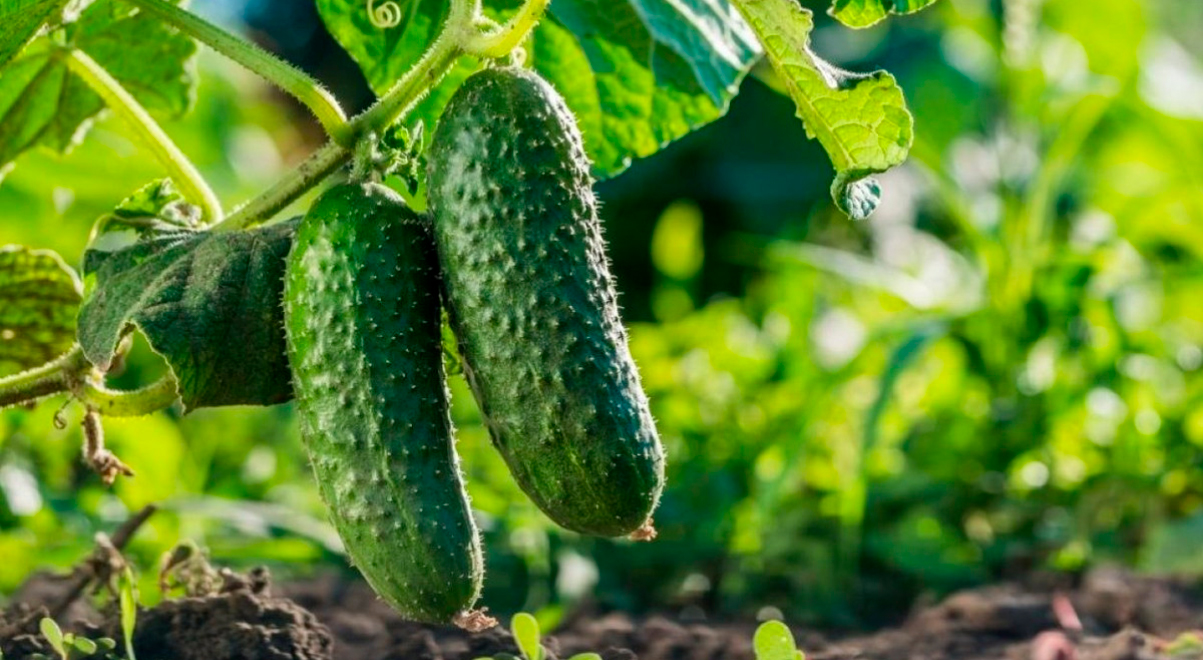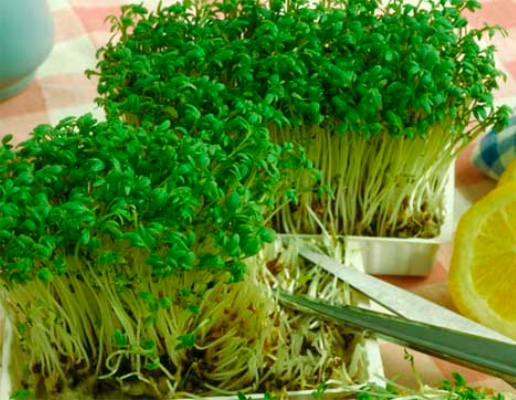Real housewives know how important it is to prepare herbs for the winter. This makes it possible to nourish the body with necessary vitamins and useful substances, when it is almost impossible to get fresh and natural products.
Why do you need to freeze herbs?
Almost any herbs are suitable for freezing, although it is not recommended to freeze green onions and salads, because they have a delicate structure that loses its appearance after freezing.
Advantages of freezing herbs:
- vitamins and qualities of herbs are preserved;
- taste and aroma are not lost;
- it is possible to compactly store products;
- you can use herbs at any moment.
How to prepare herbs?
Herbs must be meticulously washed with cold water, sorted and dried. If you planned to freeze the herbs in bunches, it is necessary to remove the stalk in advance.
Ways of freezing herbs.
There are four ways to freeze herbs:
-
Whole bundles
This method is suitable for further decorating ready-made dishes or tea brewing. For this, the bundle is placed in plastic wrap, foil or a plastic bag. In this form, you can freeze any herb – from mint to dill. For convenience, it is recommended to store several twigs in separate bags to use one portion of greens at a time.
-
Sliced
Pre-chopped leaves save time when cooking. Chopped leaves gives you the flexibility to freeze one kind of herb or prepare a mix. In this case, it is more convenient to store in portions.
-
Ice cubes
The chopped herb is placed in ice molds and filled with water. Ice cubes are used when preparing the first and second hot dishes. Mint or lemon balm leaves, for example, can be used for cosmetic purposes on the face and neck.
-
In oil
With the addition of oil, spicy herbs are frozen, used to flavor hot dishes in which oil is an important ingredient. These are thyme, tarragon, basil, thyme, cumin, and garlic cloves. The freezing method is the same as with ice cubes, the only difference is that warm oil is added instead of water.
Frozen herbs are an ideal product for filling soups and other hot dishes. Greens can be added to sauces and breakfasts – they can be used for any purpose. The main thing is to remember important rules: you can defreeze greens only once and it is better to store them in the freezer for up to one year. Otherwise, the products will begin to lose their useful properties.
Lavender is an unpretentious plant, however, like any plant, it needs proper and timely care.
FERTILIZATION
In the spring, nitrogen fertilizers should be applied to the lavender bushes, but no more than 5 liters should be applied to each bush in accordance with the usage norms indicated on the package. The next feeding should be carried out after 2 weeks. Before flowering, in the summer, phosphorus-potassium fertilizers are applied twice. In the summer, you need to carry out several weeding from weeds, but before the bushes drop their seeds. After that, you can already start soil loosening.
WATERING
Lavender is a plant that loves wet soil. But too frequent watering can lead to the death and rotting of the root system, so you should set your own watering regime depending on the weather conditions, it is better to water when the soil above becomes dry and hard. The optimal amount of watering is once a week. However, young plants need hydration more often, and older plants – less often.
CIRCUMCISION
Pruning lavender should be done in stages:
- In spring – pruning is carried out when the ground is well warmed and the air temperature is above 10 °C – this is actually in the first half of April, because at the temperature the plants need time to wake up and let new sprouts grow. At this time, it is worth removing damaged and dry branches and frozen sprouts. Cut off the herbage of the shoot, approximately 3 cm above the wooden part.
- In summer – you can trim at the beginning of flowering, in the middle and when the bush loses its decorative appearance. But it should be held by the end of July. After flowering, all the flowers are cut off at once, this is approximately 1/3 of the bush.
- In the fall, it is better to cut lavender after the first frosts, it is not necessary to cut drastically, forming a bush in the form of a ball and cutting only buds and green sprouts. It is important that if you cut the bush too early, for example, in September, then this can provoke the growth of shoots, which will not have time to become woody before December.
WARMING
Lavender should be covered in winter. You can cover it with spruce branches, and put a non-woven covering material on top of it, but not a plastic wrap.
Follow all the rules of care and lavender will decorate not only your garden, but also give you pleasant and amazing aromas!
You take care of tomatoes in the garden, take care of them, fertilize, water, weed the beds from couch grass and are already preparing to collect the first harvest, but one night the evil phytophthora destroys part of the crop. Plants are covered with brown spots with a white coating, what to do?
Signs of late blight
Phytophthora infestans – the fungus that causes late blight, multiplies quickly and reduces yields by up to 50%.
Symptoms of phytophthora are brown spots with plaque on leaves, stems and fruits, after which the affected cells begin to die, and diseased plants become unfit for consumption.
Favorable weather for the development of the disease – humidity of at least 80%, retention of water in the garden after rainfall, a sharp drop in temperature after which it remains at the level of 20°C, morning dew. Spores are carried by the root system and by wind.
Phytophthora prevention
Preventive measures will help to prevent the disease:
- separate planting of tomatoes and potatoes;
- maintaining the optimal distance between plants (about 50 cm);
- pinching the lower leaves and stepsons to ensure ventilation;
- cleaning weeds and dry vegetation;
- watering only under the root;
- mulching;
- treatment with prophylactic drugs.
Chemical means against phytophthora
A reliable drug for combating phytophthora of tomatoes is the fungicide Charivnyk from TM ProtectON.
Charivnyk is a three-component preparation that will help with the prevention, protection and fight against tomato diseases.
It contains the substances metalaxyl, mancozeb and dimethomorph, which provide a contact and systemic effect on pathogens, slow down the spread of infection and destroy it.
Benefits
- Protects plants, even under adverse weather conditions
- Increases productivity
- Protects new growth
- Non-toxic
Features of using
For prevention, processing is carried out before the first signs of the disease, but before the closing of the crop rows under favorable conditions for the development of the disease.
For treatment, the first treatment is carried out when symptoms of the disease appear, subsequent treatments are carried out after 10-14 days, taking into account the waiting period before harvesting -14 days.
In addition to tomatoes, it is suitable for processing potatoes, because they are just as vulnerable to phytophthora damage.
Every gardener wants his garden to be not only well-kept, but also filled with many plants.
Lavender bushes are one of the popular shrubs that are planted in plots, because they not only have a pleasant smell, but also reproduce easily.
Lavender can be reproduced by:
1. The grafting process
The grafting process can be carried out both in autumn and in spring. In autumn, lavender does not spend energy on growth, so it takes root faster. The grafting process is better to be carried out at temperatures above zero. After this procedure, the warm temperature should be maintained for about a month. Therefore, the reproduction process should be planned in advance. It is believed that September is the most optimal month for grafting, as the desired thermal regime is maintained.
Lavender is best propagated from 2-3 year old bushes. In order to propagate lavender by The grafting process, it is necessary to prepare cuttings 7-12 cm long, the stem should have 4-7 shoots.
When planting, the wooden part must be completely immersed in the ground.
Before planting in the soil, cuttings should be treated with a special solution that will promote the root growth. When choosing a planting site, preference should be given to the sunny side, because lavender is a heat-loving plant.
2. DISTRIBUTION OF THE BUSH
The bush of the lavender is divided into several parts, so that each part includes at least 4-5 stems. After division, the lavender is immersed in a hole, the width of which should be 2 times wider than its root system.A phosphorus-potassium mixture should be added to the bottom of the hole, and the top of the hole should be filled with earth, which should be well tamped to allow air to escape, and watered with water.
3. SEEDS
It is best to sow seeds in open ground:
- in autumn – in regions with warm winters;
- in spring – in regions with cold temperature conditions.
Sowing should be done in fertilized and loosened soil. If it is too wet, you should add sand. Holes should be made 3-4 cm deep.In winter, it is necessary to insulate the plant, because it is very heat-loving and can die at low temperatures.
Propagate lavender bushes correctly and then every year your bushes will grow!
Today, gardeners widely use the garter procedure to increase the fertility of vegetables and their resistance to diseases and pests.
Why do you need to garter cucumbers?
Gartering refers to the removal of shoots, buds and tendrils located in the upper part of the stem, used to avoid thickening of cucumbers and improve their fertility.
Advantages of the procedure
- The root system is strengthened.
- The plant receives the maximum necessary amount of nutrients.
- A large and high-quality harvest.
- It is possible to grow outside the greenhouse.
- Resistance to stress, fungi and other pests appears.
- The need of spraying is reduced.
- The duration of fruiting increases.
When should gartering be done?
Gartering should be done on young seedlings, when the plant begins to spread on the ground and has at least 6 real leaves. The time coincides with the garter and the formation of the plant.So that the slices do not immediately start to rot, it should be carried out in warm, dry, sunny weather.So that the slices do not immediately start to rot, it should be carried out in warm, dry, sunny weather.
How to garter?
The main task of gartering is the active growth of lateral shoots on which female and therefore fertile flowers are formed.
The procedure is easiest to do with Pruner – previously disinfected.
At the first gartering , the top of the stem and the flowers on the main shoot are removed.
At the next stage, ovaries, tendrils and side shoots are pinched at a height of 30-40 cm, small cucumbers are also removed.
Then the leaves and ovaries remain, only the side shoots are removed so that they do not take away all the strength for their growth.
As a result of gartering , 5-6 side shoots should remain, which must be tied to the trellis.
If the plant begins to shade its lower part when growing up, it is worth pinching a few axils of the leaves.
After such a procedure, the plant requires regular watering with warm settled water, but make sure that it does not get on the surface of the sections.
Watercress today is popular not only because of its interesting appearance – it is very easy to grow. In addition, gourmets love this green because of its interesting and unusual taste with a slight bitterness.
Care: planting, watering, fertilizers
Watercress can be grown all year round – and for this it will be enough to sow the seeds on a damp cloth.
Usually, the seeds are sown thickly in a shallow container, lightly sprinkled with earth and pressed down. Already in two weeks, you can cut the first harvest with scissors. The plants do not regenerate, but as they are cut, the green seeds are sown again.
Seedlings for salad can be obtained more easily and quickly. Seeds are poured onto wet filter paper or gauze. On the third to sixth day, the product can be added to meals.
Watercress care is minimal: providing good lighting, without additional lighting, and maintaining a temperature of +20°C. Watering is frequent and abundant in hot, dry weather, otherwise the flower-bearing stem will quickly form, the leaves will become smaller and coarser.
The Watercress requires feeding, because the growing season of watercress is short. Urea or other complex mineral fertilizer is used for this purpose.
The most greenery can be obtained in August – from 200 to 500 g per square.
Cutting rules
The first harvest after sowing can be cut already in the 2nd week, when the plant reaches 10-12 cm in height. Cut bushes are better to use immediately, because after a day they already lose their appearance and begin to wither. Therefore, watercress should be consumed as much as needed at a time.
You can cut tender stems with ordinary scissors. The lower leaves can be left, they are practically tasteless and have a coarser texture.
Growing watercress is simple – it can be done even on the windowsill at home. This “vitamin bomb” will not only add aesthetics to the dish, but also it is pleasant to see a green island on your plate. Just remember that excessive consumption of this green can lead to headaches and insomnia, so experts recommend consuming no more than 15 g per day.

